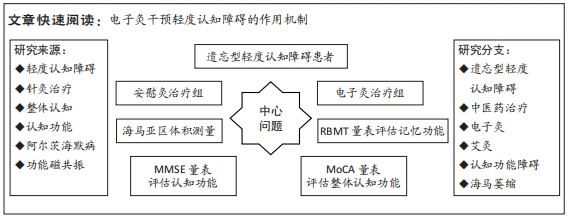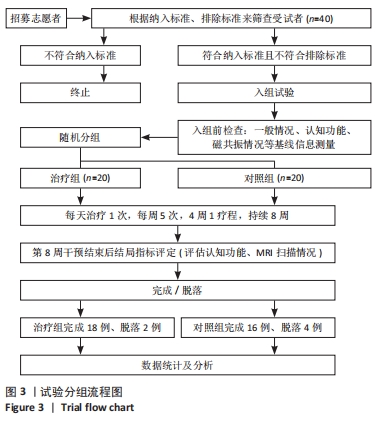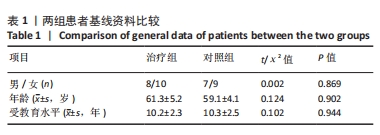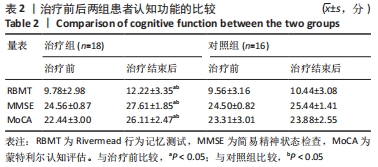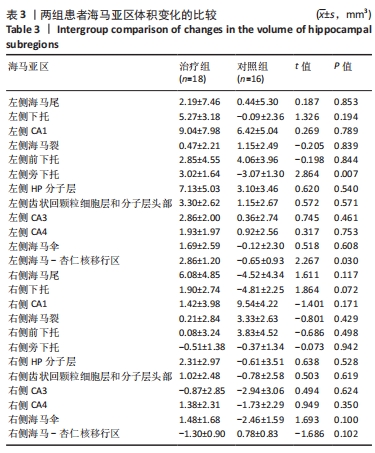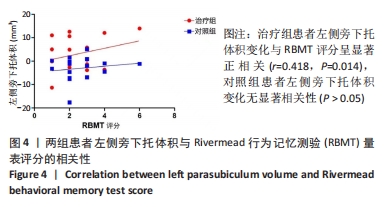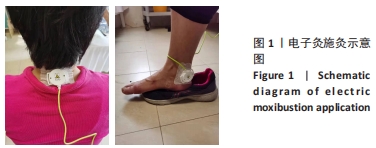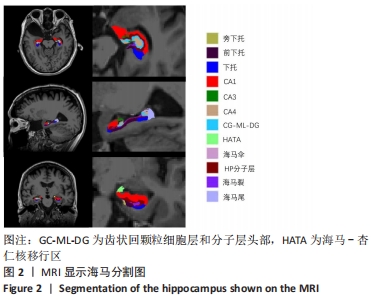[1] KNOPMAN DS, AMIEVA H, PETERSEN RC, et al. Alzheimer disease. Nat Rev Dis Primers. 2021;7(1):33.
[2] GLYNN K, O’CALLAGHAN M, HANNIGAN O, et al. Clinical utility of mild cognitive impairment subtypes and number of impaired cognitive domains at predicting progression to dementia: A 20-year retrospective study. Int J Geriatr Psychiatry. 2021;36(1):31-37.
[3] SUN Y, BI Q, WANG X, et al. Prediction of Conversion From Amnestic Mild Cognitive Impairment to Alzheimer’s Disease Based on the Brain Structural Connectome. Front Neurol. 2019;9:1178.
[4] CHEN J, ZHANG Z, LI S. Can multi-modal neuroimaging evidence from hippocampus provide biomarkers for the progression of amnestic mild cognitive impairment? Neurosci Bull. 2015;31(1):128-140.
[5] FENG F, HUANG W, MENG Q, et al. Altered Volume and Structural Connectivity of the Hippocampus in Alzheimer’s Disease and Amnestic Mild Cognitive Impairment. Front Aging Neurosci. 2021;13:705030.
[6] IGLESIAS JE, AUGUSTINACK JC, NGUYEN K, et al. Alzheimer’s Disease Neuroimaging Initiative. A computational atlas of the hippocampal formation using ex vivo, ultra-high resolution MRI: Application to adaptive segmentation of in vivo MRI. Neuroimage. 2015;115:117-137.
[7] HUANG Y, HUANG L, WANG Y, et al. Differential associations of visual memory with hippocampal subfields in subjective cognitive decline and amnestic mild cognitive impairment. BMC Geriatr. 2022;22(1):153.
[8] JOE E, RINGMAN JM. Cognitive symptoms of Alzheimer’s disease: clinical management and prevention. BMJ. 2019;367:l6217.
[9] WANG H, YU H, SONG K, et al. Traditional Chinese medicine for mild cognitive impairment: A protocol for systematic review and network meta-analysis. Medicine (Baltimore). 2020;99(37):e22187.
[10] LIU C, ZHAO L, XU K, et al. Altered functional connectivity density in mild cognitive impairment with moxibustion treatment: A resting-state fMRI study. Brain Res. 2022;1775:147732.
[11] 柳奇奇,陈尚杰,申国民,等.电子灸对遗忘型轻度认知障碍患者记忆功能的影响[J].中国针灸,2020,40(4):352-356.
[12] PETERSEN RC. Mild cognitive impairment as a diagnostic entity.J Intern Med. 2004;256(3):183-194.
[13] BOLLÓ-GASOL S, PIÑOL-RIPOLL G, CEJUDO-BOLIVAR JC, et al. Ecological assessment of mild cognitive impairment and Alzheimer disease using the Rivermead Behavioural Memory Test. Neurologia. 2014;29(6):339-345.
[14] AREVALO-RODRIGUEZ I, SMAILAGIC N, ROQUÉ I FIGULS M,
et al. Mini-Mental State Examination (MMSE) for the detection of Alzheimer’s disease and other dementias in people with mild cognitive impairment(MCI). Cochrane Database Syst Rev. 2015;(3):CD010783.
[15] LI X, JIA S, ZHOU Z, et al. The role of the Montreal Cognitive Assessment (MoCA) and its memory tasks for detecting mild cognitive impairment. Neurol Sci. 2018;39(6):1029-1034.
[16] KANG HR, LEE YS, KIM SH, et al. Effectiveness and safety of electrical moxibustion for knee osteoarthritis: A multicenter, randomized, assessor-blinded, parallel-group clinical trial. Complement Ther Med. 2020;53:102523.
[17] HUAN X, WU L, WANG M, et al. The effect of electronic moxibustion combined with rehabilitation nursing on the lumbar pain and stiffness of ankylosing spondylitis patients. Am J Transl Res. 2021;13(5):5452-5459.
[18] LISMAN J, BUZSÁKI G, EICHENBAUM H, et al. Viewpoints: how the hippocampus contributes to memory, navigation and cognition. Nat Neurosci. 2017;20(11):1434-1447.
[19] LIU W, AU LWC, ABRIGO J, et al. Alzheimer’s Disease Neuroimaging Initiative. MRI-based Alzheimer’s disease-resemblance atrophy index in the detection of preclinical and prodromal Alzheimer’s disease. Aging (Albany NY). 2021;13(10):13496-13514.
[20] BRUEGGEN K, KASPER E, DYRBA M, et al. The Primacy Effect in Amnestic Mild Cognitive Impairment: Associations with Hippocampal Functional Connectivity. Front Aging Neurosci. 2016;8:244.
[21] HE P, QU H, CAI M, et al. Structural Alteration of Medial Temporal Lobe Subfield in the Amnestic Mild Cognitive Impairment Stage of Alzheimer’s Disease. Neural Plast. 2022;2022:8461235.
[22] MADUSANKA N, CHOI HK, SO JH, et al. One-year Follow-up Study of Hippocampal Subfield Atrophy in Alzheimer’s Disease and Normal Aging. Curr Med Imaging Rev. 2019;15(7):699-709.
[23] SU L, HAYES L, SOTERIADES S, et al. Hippocampal Stratum Radiatum, Lacunosum, and Moleculare Sparing in Mild Cognitive Impairment. J Alzheimers Dis. 2018;61(1):415-424.
[24] KHAN MNA, GHAFOOR U, YOO HR, et al. Acupuncture enhances brain function in patients with mild cognitive impairment: evidence from a functional-near infrared spectroscopy study. Neural Regen Res. 2022;17(8):1850-1856.
[25] SAMMONS RP, PARTHIER D, STUMPF A, et al. Electrophysiological and Molecular Characterization of the Parasubiculum. J Neurosci. 2019; 39(45):8860-8876.
[26] BARRY DN, CLARK IA, MAGUIRE EA. The relationship between hippocampal subfield volumes and autobiographical memory persistence. Hippocampus. 2021;31(4):362-374.
[27] LI M, LI Y, LIU Y, et al. Altered Hippocampal Subfields Volumes Is Associated With Memory Function in Type 2 Diabetes Mellitus. Front Neurol. 2021;12:756500.
[28] ZHENG F, CUI D, ZHANG L, et al. The Volume of Hippocampal Subfields in Relation to Decline of Memory Recall Across the Adult Lifespan. Front Aging Neurosci. 2018;10:320.
[29] AUM S, CHOE S, CAI M, et al. Moxibustion for cognitive impairment: a systematic review and meta-analysis of animal studies. Integr Med Res. 2021;10(2):100680.
[30] 朱才丰,孙健健,韩为,等.通督调神灸法抗轻度认知功能障碍大鼠海马β-淀粉样蛋白过度表达的机制研究[J].针刺研究,2016, 41(2):131-137.
[31] 汪海燕,李思妤,胡琼,等.艾灸对遗忘型轻度认知障碍记忆功能及相关血清蛋白标志物的影响[J]. 针刺研究,2021,46(9):794-799.
[32] LI J, CAO D, DIMAKOPOULOS V, et al. Anterior-Posterior Hippocampal Dynamics Support Working Memory Processing. J Neurosci. 2022; 42(3):443-453.
[33] BECKER S, GRANERT O, TIMMERS M, et al. Association of Hippocampal Subfields, CSF Biomarkers, and Cognition in Patients With Parkinson Disease Without Dementia. Neurology. 2021;96(6):e904-e915.
|
